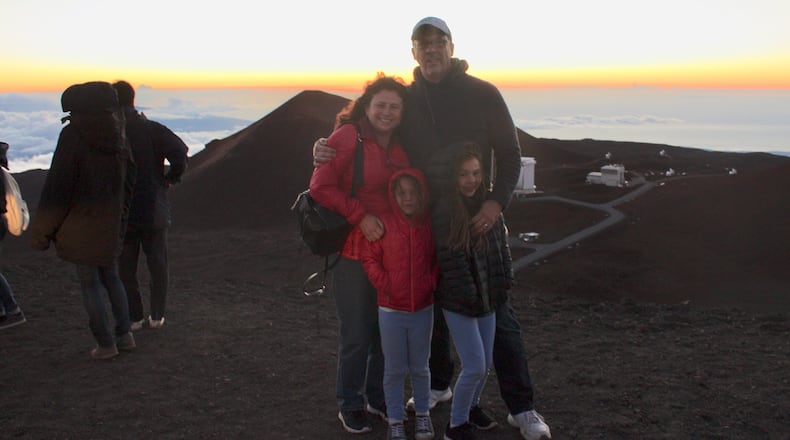We tend to think of Hawaii as a land of luaus and umbrella drinks, not rugged, white-knuckled mountain adventures. But this is the Big Island, with more than 4,000 square miles of wild, volcanic terrain. Rising up in the middle of all that bigness is Mauna Kea, which rises 13,803 feet above sea level.
But unlike most towering peaks, Mauna Kea’s base rests on the ocean floor, so its true base-to-summit elevation is 33,476 feet, relegating Mount Everest to second place on the world’s highest peaks list. It’s a point of pride you’ll hear repeatedly on the Big Island, where the mountain is considered sacred and debate continues over whether its name should be one word or two.
Reaching the summit doesn’t require Everest-level equipment, though, just a vehicle with four-wheel drive. The Saddle Road — or Daniel K. Inouye Highway, named for the late Hawaiian senator — bisects the Big Island on tarmac so smooth, we didn’t even realize how high we were until we reached the turnoff for the Mauna Kea Access Road at 6,600-feet elevation.
The road lives up to its name, accessing the summit on a drive that winds through sections of spitting rain, a few rounds of popping ears and the occasional wild sheep sighting. Six miles up we reach the visitor information station and the Onizuka Center for International Astronomy, named for Hawaiian astronaut Ellison Onizuka, who died in the 1986 Space Shuttle Challenger explosion.
The station ranger wasn’t kidding when he said the pavement ended “right around the corner.” We had barely pulled away from the visitor station when the modern, paved road became Mauna Kea in its more natural state. Four-wheeling at sea level can be exhilarating and fun. Four-wheeling over five steep, graveled miles, as you break through the cloud line, all the while trying to admire the view and not careen down 10,000 feet to the island below? My stomach lurched with every ultra-ginger turn of the steering wheel.
For whatever reason — I’m not questioning, I’m just grateful — the final three-mile stretch to the Mauna Kea summit area is paved. And when we got there, we weren’t alone. Everyone ahead of us had pulled off to get a look at what locals call “the golf balls” — 13 observatories, tucked among these fields of volcanic rock and operated by universities and organizations from different nations. The clear, dark skies here make this summit an astronomer’s dream.
We were just in time to catch the green flash, the split-second the sun disappears into the Pacific Ocean. As soon as the sun was gone, whatever tropical warmth left at the summit vanished as well. It gets wintry cold when you’re more than two miles above sea level, even in Hawaii. I may wear shorts year-round, but the summit is long-sleeve, long-pants territory.
Of course, sunset also meant that most of our drive back down the mountain would be in the dark. I did my best to keep our monster of an SUV in four-wheel drive and low gear, but I was only fooling myself. The fragrance of tortured brakes was evident when we took a break at the visitor center. Fortunately, the ranger was busy elsewhere. Lecture averted.
And the brakes held their own for the rest of the journey down the mountain and back to sea level, where luaus awaited.
—
IF YOU GO
Mauna Kea Summit: The summit area is open daily from 30 minutes before sunrise until 30 minutes past sunset. Enjoy spectacular views of the Big Island and the observatories. The latter are not open to the public, but the Mauna Kea Visitor Information Station offers stargazing events on Tuesday, Wednesday, Friday and Saturday evenings.
Check in at the visitor station for weather and road conditions, and to adjust to the altitude for at least 30 minutes before heading further up. Only true four-wheel drive vehicles are allowed on the summit road. (Note that some rental car contracts explicitly forbid this drive, even for four-wheel drive cars.)
Altitude caution: The drive from sea level to summit poses a dramatic elevation gain, significant drop in oxygen levels and heightened risk of altitude sickness. The park service recommends that pregnant women, children under age 16 and anyone with heart or respiratory problems not ascend higher than the visitor station. Scuba divers should not travel to the summit within 24 hours of a dive.
Find more information about visiting Mauna Kea, including a list of commercial tour companies licensed to guide tours on the mountain, at www.ifa.hawaii.edu/info/vis.
About the Author
